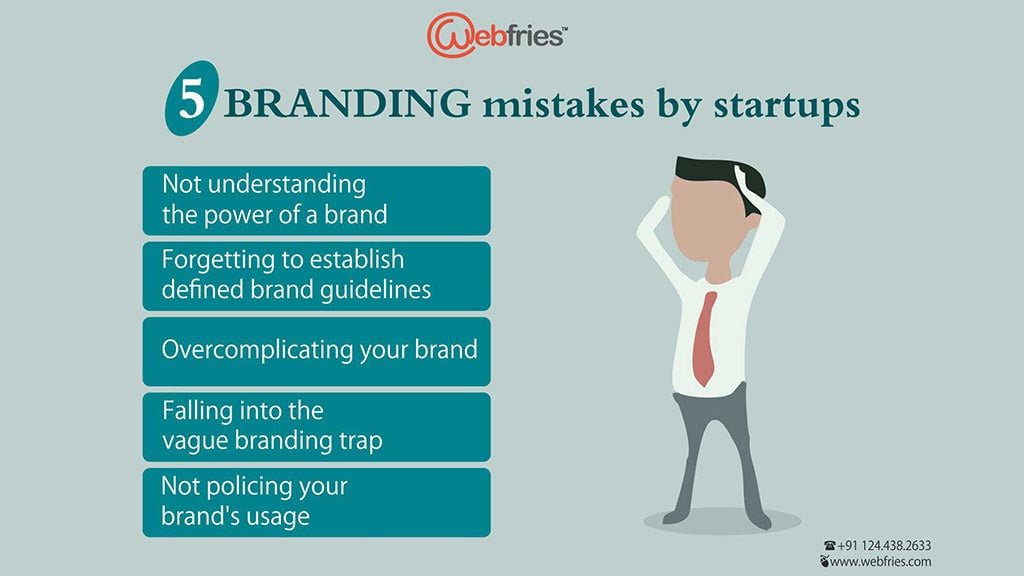You are the new kid on the block, the latest addition to the ever-increasing list of startups. You have big dreams and want your brand to be one of the greatest. When you think about the best branding, Coca-Cola’s iconic red and white lettering, Adidas’s three stripes, and Nike’s swoosh likely come to mind. But as a small business, the thought of matching that level of investment can feel overwhelming.
The good news? Strong branding starts with powerful messaging—and that’s where professional copywriting services can help. Even with a modest budget, the right words can make your brand unforgettable, setting the foundation for your own iconic identity.
But the good news for you is that it’s much easier than most people think. You simply need to avoid a few common pitfalls and branding mistakes. Partnering with experts who offer branding services in Gurugram can help you build a strong, consistent, and memorable brand right from the start.
Not understanding the power of a brand.
From a customer-relationship viewpoint, having a strong brand is beneficial. You need to have a kind of instantaneous and definitive relationship with your buyers.
The definition of your brand is also important from an SEO perspective. It’s an open secret that Google loves to prioritize branded listings in its search results as visitors are more probable to click on them. More clicks mean happier customers, which makes it clear that concentrating on the brand building could lead to unanticipated website traffic and awareness benefits.
Forgetting to establish defined brand guidelines.
So, now you know and agree that your company may need to develop a brand, but what precisely does that mean?
When crafting a brand identity, you’ll have to create defined guidelines that will cover all of the following elements
- Logo
- Taglines
- Brand colours
- Fonts and typography
- Imagery
- Mascots and spokespeople
- The “voice” used in your branded materials
This list isn’t inclusive. Go ahead and add any other branding characteristic that you feel is necessary to define your business
WHY ARE THESE GUIDELINES SO IMPORTANT?
The definition of brand guidelines finds mention on this list because, without them, all of your branding efforts will look aimlessly poor as they will lack the uniformity and direction needed for success.
Overcomplicating your brand.
Take a look. Coca-Cola logo has remained almost the same for over a hundred years since 1887 because consumers relate to it
While the fonts used have varied a little, the original look is still largely intact after more than 127 years of service.
Small businesses need to learn a lesson from this beverage industry giant. It can be enticing to add more variables and experiment with different styles than you truly need. But your logo doesn’t always need to be a ‘Rainbow’ and it certainly doesn’t need to have different individual graphic elements to signify the different arms of your company.
Clean and simple are the keywords as it is more likely to be recognized and remembered by consumers.
Falling into the vague branding trap.
But on the other hand, don’t go in the opposite direction and fall into another trap.
Develop brand guidelines and elements that divulge nothing about your company and its value proposition. You must have seen this before in generic logos or as they are known in marketing language, ‘The downright repetitive’. The taglines like “best-selling” books and “award-winning” ad agencies lack innovation and don’t mean anything.
In the Marketing World, these are known as lazy branding “wallpaper copywriting” or catch-all nonsense that has been repeated and repeated so often that it has lost all meaning.
So what’s the answer? Clear language, logos, and imagery.
Take a look at the following screenshot.
This is a mobile payment processor Square’s landing page. Not only does the company’s logo strikingly represent the product, the value proposition defined in the tagline “Start accepting credit cards today” is right in the bull’s eye.
Not policing your brand’s usage.
Planning and implementing your start-up’s brand guidelines is only half the battle won. You have got to be proactive about monitoring and policing where and how others are using your brand elements on your behalf. Not only this, your competitors may create a logo that looks similar, a review website may be using your logo without linking back or a partner broadcasting an ad containing your logo but with the wrong colours.
Some of these issues may seem minor and harmless, but in certain situations, they can escalate to the point of legal action—especially if your branded elements are being misused or copied. After all, who will protect your brand better than you? Partnering with the best branding agency in Gurgaon ensures your brand is not only well-crafted but also well-protected.



